Kia Niro vs Mitsubishi ASX – Differences & prices compared
Compare performance, boot space, consumption and price in one view.
Find out now: which car is the better choice for you – Kia Niro or Mitsubishi ASX?
The Kia Niro (SUV) comes with a Full Hybrid or Plugin Hybrid engine and Automatic transmission. In comparison, the Mitsubishi ASX (SUV) features a Petrol, Petrol MHEV or Full Hybrid engine with Manuel or Automatic transmission.
When it comes to boot capacity, the Kia Niro offers 451 L, while the Mitsubishi ASX provides 484 L – depending on how much space you need. If you’re looking for more power, decide whether the 180 HP of the Kia Niro or the 158 HP of the Mitsubishi ASX suits your needs better.
In terms of consumption, the values are 2.40 L per 100 km for the Kia Niro, and 4.40 L for the Mitsubishi ASX.
Price-wise, the Kia Niro starts at 29100 £, while the Mitsubishi ASX is available from 20600 £. Compare all the details and find out which model fits your lifestyle best!
In the competitive segment of compact SUVs, the Kia Niro shines with its hybrid efficiency and spacious interior, making it an ideal choice for eco-conscious drivers. On the other hand, the Mitsubishi ASX offers a more rugged aesthetic and a slightly sportier driving experience, appealing to those who prioritize adventure in their daily commute. Ultimately, each model caters to different preferences, showcasing the diverse options available to today's SUV buyers.
Kia Niro
The Kia Niro presents itself as a versatile and eco-friendly SUV, blending a stylish design with advanced hybrid technology. Its spacious interior offers comfort and practicality, making it ideal for both city driving and longer journeys. With a focus on efficiency and sustainability, the Niro is a compelling choice for environmentally conscious drivers.
details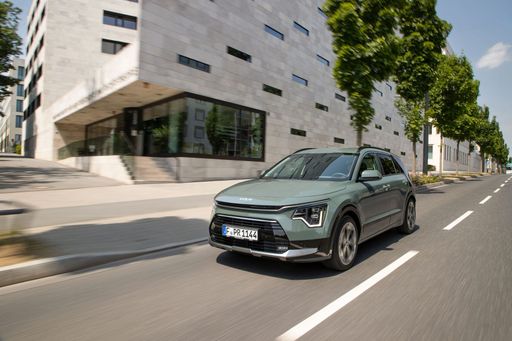 @ press.kia.com
@ press.kia.com
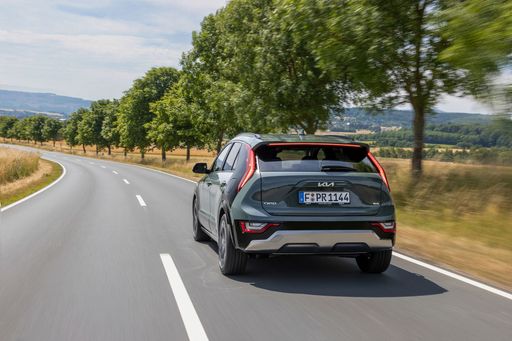 @ press.kia.com
@ press.kia.com
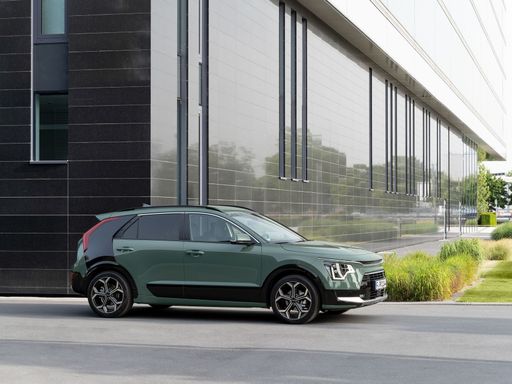 @ press.kia.com
@ press.kia.com
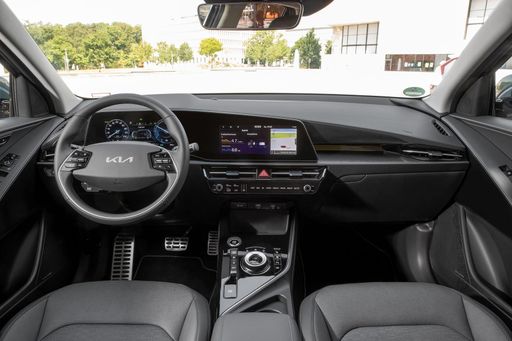 @ press.kia.com
@ press.kia.com
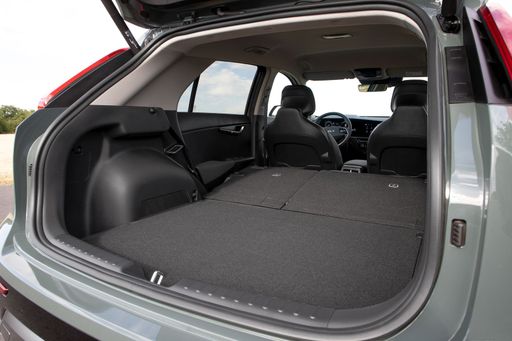 @ press.kia.com
@ press.kia.com
Mitsubishi ASX
The Mitsubishi ASX presents itself as a compact crossover that combines practicality with style. Its sleek design and versatile interior make it an appealing choice for both urban and rural settings. With a focus on providing a comfortable driving experience, the ASX also offers a range of modern features that enhance connectivity and safety.
details @ Mitsubishi
@ Mitsubishi
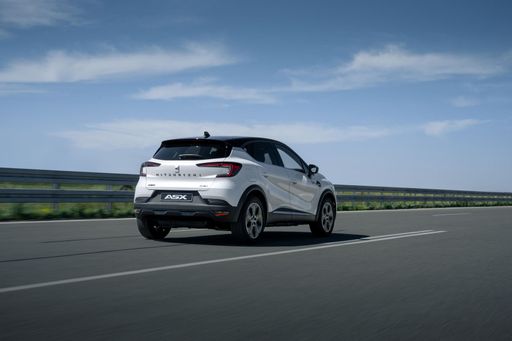 @ Mitsubishi
@ Mitsubishi
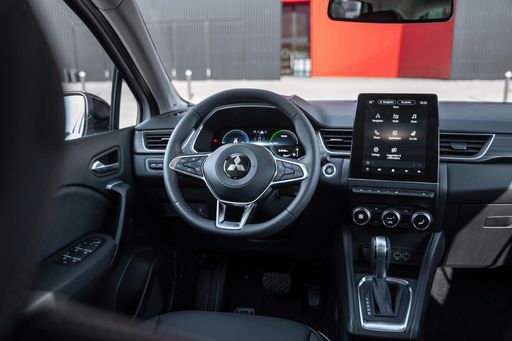 @ Mitsubishi
@ Mitsubishi
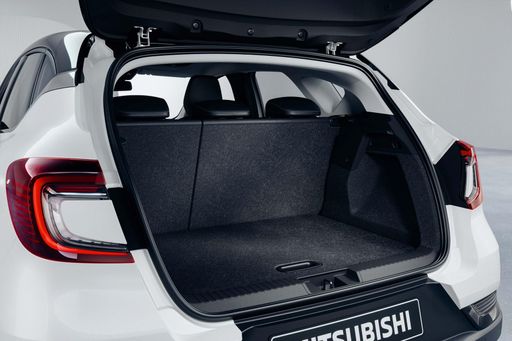 @ Mitsubishi
@ Mitsubishi
As the automotive market continues to evolve, compact SUVs have become increasingly popular due to their versatility, efficiency, and advanced technology. In this article, we delve into a comparative analysis of two strong contenders in this segment: the Kia Niro and the Mitsubishi ASX. Both vehicles offer an intriguing mix of performance, fuel efficiency, and modern features. Let's explore how these two models stack up against each other.
Design and Dimensions
The Kia Niro, a stylish and modern-looking SUV, dimensions at 4420 mm in length, 1825 mm in width, and stands 1545 mm tall. Its design combines a sporty feel with practicality, featuring a spacious 451 liters of trunk capacity.
On the other hand, the Mitsubishi ASX measures slightly shorter at 4239 mm and is 1797 mm wide, with a height of 1575 mm. While it may have less trunk space at 484 liters, the ASX's design still offers a commanding road presence and rugged appeal.
Engine Options and Performance
The Kia Niro is notably versatile in its engine options, offering a range of powertrains including Full Hybrid and Plug-in Hybrid variants. The power output can go up to 171 HP depending on the variant, with a commendable torque figure of 265 Nm. Acceleration from 0 to 100 km/h takes approximately 10.4 seconds, highlighting its responsive nature on the road.
In contrast, Mitsubishi ASX comes equipped with various petrol engines, delivering between 91 HP to 158 HP depending on the selection. The ASX's most performant variant can accelerate from 0 to 100 km/h in as little as 8.5 seconds, showcasing a competitive edge in acceleration.
Fuel Efficiency
When it comes to fuel efficiency, the Kia Niro stands tall with a remarkable consumption figure as low as 4.4 L/100 km in hybrid forms. Its innovative setup, including a battery capacity of up to 11.1 kWh for plug-in variants, allows it to offer an electric range of 65 km, promoting eco-friendliness and savings on fuel costs.
Mitsubishi ASX, while being a solid contender, shows a higher average fuel consumption between 4.7 to 6 L/100 km, which might not appeal as strongly to the eco-conscious driver. Its battery capacity for hybrid models is lower at 0.6 kWh, and while it offers solid performance, the electric range is less competitive compared to the Niro.
Technological Innovations
The Kia Niro is packed with cutting-edge technology. It features an intuitive infotainment system, driver assistance features, and an array of connectivity options. Kia’s commitment to safety is evident with systems like lane-keeping assist and advanced cruise control, making it a reliable choice for families.
Meanwhile, the Mitsubishi ASX offers a robust array of safety and convenience technology as well. Its dashboard is equipped with a modern infotainment unit, connectivity support, and essential safety features, though it may not be as refined as the offerings in the Niro.
Comfort and Interior
The Niro’s spacious interior is designed for both comfort and practicality, accommodating up to five passengers without compromising on legroom or headspace. The interior materials are of high quality, giving the cabin a premium feel.
The Mitsubishi ASX also provides a comfortable environment for passengers, featuring quality materials and decent headroom. However, it may not offer the same level of luxury and spaciousness present in the Niro, primarily due to its slightly more compact dimensions.
Conclusion
In summary, both the Kia Niro and Mitsubishi ASX offer compelling options for compact SUV enthusiasts, each with its own strengths. The Niro excels in fuel efficiency, technological innovation, and a spacious interior, making it an ideal family vehicle. Conversely, the ASX provides a spirited driving experience with diverse engine options and a rugged design that appeals to adventure seekers.
Ultimately, the choice between the two will depend on individual preferences and lifestyle needs. Whether you prioritize eco-friendly hybrid technology or a sporty driving dynamic, both the Kia Niro and Mitsubishi ASX are formidable contenders in the compact SUV arena.

|

|
|
|
|
Costs and Consumption |
|
|---|---|
|
Price
29100 - 38600 £
|
Price
20600 - 32500 £
|
|
Consumption L/100km
2.4 - 4.9 L
|
Consumption L/100km
4.4 - 6 L
|
|
Consumption kWh/100km
-
|
Consumption kWh/100km
-
|
|
Electric Range
57 - 62 km
|
Electric Range
-
|
|
Battery Capacity
1.3 - 11.1 kWh
|
Battery Capacity
-
|
|
co2
53 - 111 g/km
|
co2
99 - 135 g/km
|
|
Fuel tank capacity
37 - 42 L
|
Fuel tank capacity
48 L
|
Dimensions and Body |
|
|---|---|
|
Body Type
SUV
|
Body Type
SUV
|
|
Seats
5
|
Seats
5
|
|
Doors
5
|
Doors
5
|
|
Curb weight
1474 - 1594 kg
|
Curb weight
1296 - 1493 kg
|
|
Trunk capacity
348 - 451 L
|
Trunk capacity
348 - 484 L
|
|
Length
4420 mm
|
Length
4239 mm
|
|
Width
1825 mm
|
Width
1797 mm
|
|
Height
1545 mm
|
Height
1575 mm
|
|
Payload
466 kg
|
Payload
397 - 449 kg
|
Engine and Performance |
|
|---|---|
|
Engine Type
Full Hybrid, Plugin Hybrid
|
Engine Type
Petrol, Petrol MHEV, Full Hybrid
|
|
Transmission
Automatic
|
Transmission
Manuel, Automatic
|
|
Transmission Detail
Dual-Clutch Automatic
|
Transmission Detail
Manual Gearbox, Dual-Clutch Automatic, Automatic Gearbox
|
|
Drive Type
Front-Wheel Drive
|
Drive Type
Front-Wheel Drive
|
|
Power HP
138 - 180 HP
|
Power HP
91 - 158 HP
|
|
Acceleration 0-100km/h
9.9 - 11.4 s
|
Acceleration 0-100km/h
8.5 - 14 s
|
|
Max Speed
170 - 185 km/h
|
Max Speed
168 - 180 km/h
|
|
Torque
265 Nm
|
Torque
160 - 270 Nm
|
|
Number of Cylinders
4
|
Number of Cylinders
3 - 4
|
|
Power kW
102 - 132 kW
|
Power kW
67 - 116 kW
|
|
Engine capacity
1580 cm3
|
Engine capacity
999 - 1789 cm3
|
General |
|
|---|---|
|
Model Year
2025
|
Model Year
2024 - 2025
|
|
CO2 Efficiency Class
C, B
|
CO2 Efficiency Class
D, C
|
|
Brand
Kia
|
Brand
Mitsubishi
|
Kia Niro
The Evolution of the Kia Niro: A Glimpse into the Future
The Kia Niro has become a symbol of innovation in the hybrid and electric vehicle market. This compact SUV offers a unique blend of efficiency, performance, and style, appealing to a wide range of drivers. Kia Niro's latest model lineup showcases different powertrains, offering consumers choices between full hybrid, plug-in hybrid, and full electric options. These advancements represent Kia's commitment to sustainable mobility and cutting-edge technology.
Performance and Efficiency: Behind the Wheel of the Kia Niro
The performance range of the Kia Niro is impressive, with power outputs ranging from 129 PS in the full hybrid variant to 204 PS in the completely electric version. This ensures that there’s a Niro to meet diverse driving needs and preferences. The acceleration from 0-100 km/h spans between 7.8 to 11.3 seconds across different models, showcasing a balance between efficiency and responsiveness.
Fuel and energy consumption figures are equally commendable. With the hybrid models consuming between 0.8 to 4.4 litres per 100 km and the electric model utilising 16.2 kWh per 100 km, the Kia Niro caters to eco-conscious consumers. Notably, the plug-in hybrid version offers a remarkable electric range of up to 65 km, while the fully electric model boasts an impressive range of 460 km on a single charge.
Innovative Features for Today’s Driver
Kia has equipped the Niro with state-of-the-art features aimed at enhancing the driving experience. The latest models come with advanced driver assistance systems, ensuring safety and convenience. These include lane-keeping assist, adaptive cruise control, and collision avoidance technologies that set a high standard in the compact SUV class.
The Niro also benefits from a sleek infotainment system featuring a high-resolution display, offering seamless connectivity with features like Apple CarPlay and Android Auto. This keeps drivers connected while minimising distractions, creating an optimal driving environment.
Design and Practicality: A Perfect Balance
The Kia Niro stands out with its aerodynamic design, which is both aesthetically pleasing and practical. The dimensions of the vehicle – 4420 mm in length, 1825 mm in width, and a height ranging from 1545 to 1570 mm – provide ample space for passengers and cargo. The boot capacity ranges from 348 to 475 litres, catering to those who require versatility for their lifestyle or family needs.
The Niro’s cabin is crafted with a focus on comfort and usability, incorporating high-quality materials and an intelligent layout that complements its sophisticated exterior.
Sustainability and Cost Efficiency
The Kia Niro reflects Kia's dedication to improving environmental performance. The CO2 emissions spectrum, ranging from 0 to 100 g/km depending on the powertrain, highlights the vehicle's eco-friendly credentials. For those particularly conscious of their environmental footprint, the electric and plug-in hybrid models offer substantial reductions in emissions.
In terms of cost, the Niro offers competitive pricing from €32,790 to €47,590, and operational costs ranging from €928 to €1,101 per month. The Niro also maintains a reasonable cost per kilometre, between 37.1 to 44.1 cents, making it an economically sound choice in the long run.
Conclusion: The Future is Bright for Kia Niro
The Kia Niro stands as a testament to Kia’s innovative spirit and commitment to providing eco-friendly and technologically advanced vehicles. Its blend of performance, efficiency, and innovative features make it a compelling option for those seeking a future-focused SUV. As Kia continues to evolve, the Niro remains a leading example of how the brand is shaping the future of driving.
Mitsubishi ASX
The Mitsubishi ASX: A Modern SUV with Advanced Features
The Mitsubishi ASX continues to be a popular choice for SUV enthusiasts, combining sleek design, impressive efficiency, and innovative technology. The 2024 model year introduces an array of improvements, making it a worthy contender in its category. In this article, we will delve into the technical details and innovative aspects of the Mitsubishi ASX, presenting why it stands out in the SUV segment.
Sophisticated Powertrains and Efficiency
Under the bonnet, the Mitsubishi ASX offers a variety of powertrain options, catering to different driving preferences. Customers can choose from petrol engines, mild-hybrid systems, and full-hybrid configurations, balancing power and efficiency effectively.
The performance spectrum ranges from 91 PS to 158 PS, demonstrating the vehicle's versatility. With a fuel consumption of between 4.7 and 6 L/100km, the ASX effectively manages fuel efficiency without compromising on performance. The car's CO2 emissions range from 107 to 135 g/km, placing it within CO2 efficiency classes C and D.
Advanced Transmission Options
The ASX offers a mixture of manual and automatic transmissions to meet diverse driving needs. Its gearbox specifications include a standard manual option and automatic options such as dual-clutch transmissions, providing a seamless driving experience. Depending on the variant, the vehicle can accelerate from 0 to 100 km/h in as little as 8.5 seconds, reaching maximum speeds between 168 and 180 km/h.
Modern Design and Spacious Interior
Externally, the ASX reflects contemporary design aesthetics, with dimensions of 4239 mm in length, 1797 mm in width, and 1575 mm in height. Internally, it accommodates up to five passengers comfortably and offers a respectable boot capacity ranging from 348 to 484 litres. Despite its spaciousness, the SUV maintains an optimal weight between 1296 and 1501 kg, which aids in delivering its intended driving dynamics.
Safety and Technology Innovations
Mitsubishi prioritises safety and technology in the ASX. It is equipped with the latest driver-assistance systems, enhancing safety and convenience. The modern infotainment system integrates smoothly with smartphones, ensuring that connectivity is at the driver's fingertips. Moreover, various trimming levels such as "Intro Edition DCT" and "Top Automatik" allow customers to select features best suited to their lifestyle, from basic utilities to luxury enhancements.
Conclusion: A Balanced SUV Choice
The Mitsubishi ASX stands out as a well-rounded SUV choice for those who prioritise efficiency, reliability, and modern technology. Its array of powertrains, stylish design, and advanced safety features make it an attractive option within its price range of €23,990 to €37,390. The ASX's 2024 model reaffirms Mitsubishi’s commitment to offering innovative yet practical vehicles to the global market.
Which drive types are available for the Kia Niro?
Available as Front-Wheel Drive.
The prices and data displayed are estimates based on German list prices and may vary by country. This information is not legally binding.
